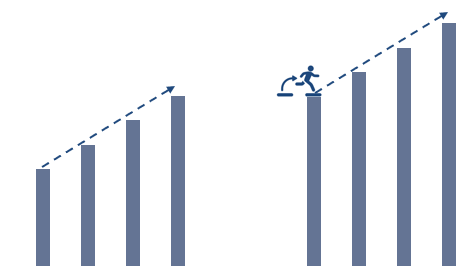In the insurance industry, a Risk Manager identifies, assesses, and mitigates risks that could negatively impact the financial stability, operations, and reputation of an insurance company. The role involves analyzing various types of risks—ranging from underwriting and investment risks to operational, compliance, and strategic risks—and developing strategies to manage and minimize those risks.
Here’s an overview of the key responsibilities and duties of a Risk Manager in insurance:
1. Risk Identification and Assessment
- Risk analysis: The Risk Manager identifies and assesses all potential risks that the insurance company might face, including underwriting risks (e.g., risk of claims), investment risks (e.g., market fluctuations), operational risks (e.g., system failures), legal and regulatory risks, and reputational risks.
- Risk mapping: They create risk maps to visualize and categorize risks according to their potential impact and likelihood, helping the organization understand and prioritize them.
- Risk profiling: The Risk Manager may use data analytics, scenario analysis, and stress testing to evaluate the potential impact of various risks on the company’s financial health.
2. Risk Mitigation and Control
- Develop risk mitigation strategies: Based on the identified risks, the Risk Manager works with other departments (underwriting, investments, legal, operations) to develop and implement strategies to reduce or eliminate risks. This could involve adjusting pricing models, diversifying investments, enhancing claims management processes, or improving compliance procedures.
- Internal controls and policies: They help develop internal policies and procedures to ensure that the company’s operations are aligned with industry best practices and regulatory requirements, minimizing exposure to risk.
- Risk transfer strategies: In some cases, the Risk Manager may recommend transferring certain risks through reinsurance or other risk-sharing mechanisms.
3. Risk Monitoring and Reporting
- Ongoing risk monitoring: The Risk Manager continually monitors existing risks and new emerging threats, ensuring that the company is proactive in addressing potential issues before they materialize.
- Key risk indicators (KRIs): They track and report on KRIs and other metrics that provide early warnings of increased risk exposure, such as claims trends, underwriting profitability, or changes in market conditions.
- Risk reporting: Regularly reports on the risk landscape to senior management, the board of directors, and regulatory bodies. These reports typically include the status of risk management initiatives, risk trends, and any significant risk events.
4. Compliance and Regulatory Oversight
- Regulatory compliance: The Risk Manager ensures that the insurance company complies with local, national, and international regulatory requirements related to risk management, capital adequacy, solvency, and reporting.
- Stress testing and solvency assessments: They are often responsible for conducting stress tests to assess how the company’s financial position might be impacted under extreme but plausible risk scenarios (e.g., catastrophic events, significant market downturns). This helps ensure that the company remains solvent even under adverse conditions.
- Audit coordination: The Risk Manager coordinates with internal and external auditors to ensure that risk management practices meet regulatory standards.
5. Claims Risk Management
- Claims forecasting: They work closely with the claims department to understand and forecast potential claims liabilities, particularly for large or complex policies. This can involve setting aside reserves or adjusting underwriting criteria to address future claim risks.
- Claims trends analysis: Analyzing historical claims data to identify patterns and trends that could signal emerging risks, such as higher-than-expected claims frequency or severity in certain lines of business.
6. Risk Culture and Training
- Risk culture development: The Risk Manager promotes a risk-aware culture within the organization, encouraging employees at all levels to identify and report risks and understand the company’s approach to risk management.
- Training and awareness programs: They may conduct training sessions for employees to increase awareness of risk management policies, regulatory changes, and best practices for mitigating risks within their respective functions.
7. Collaboration with Underwriting and Investments
- Underwriting support: The Risk Manager works closely with the underwriting team to assess the risk profile of new business, evaluate the adequacy of policy terms, and ensure pricing is aligned with the company’s risk appetite.
- Investment strategy oversight: In collaboration with the investment team, the Risk Manager assesses the risks associated with the company’s investment portfolio, ensuring that investments are diversified and consistent with the company’s overall risk tolerance and regulatory requirements.
8. Crisis Management and Business Continuity Planning
- Crisis management: The Risk Manager plays a key role in developing and implementing crisis management plans in case of a major risk event, such as a natural disaster, cyber attack, or financial market crash. This involves establishing protocols for responding to and recovering from these events.
- Business continuity: They help ensure that the company has appropriate business continuity plans in place to maintain operations during and after a significant risk event or disruption.
Key Skills and Qualifications:
- Analytical skills: Strong ability to analyze complex risk data and draw actionable insights.
- Knowledge of insurance and finance: A deep understanding of insurance products, underwriting processes, and financial markets is critical for evaluating risks in an insurance context.
- Regulatory knowledge: In-depth knowledge of industry regulations and compliance requirements (e.g., Solvency II, IFRS, etc.).
- Problem-solving and decision-making: The ability to assess complex situations and make informed decisions under uncertainty.
- Communication skills: Clear and effective communication with senior management, regulators, and other stakeholders is essential.
- Risk management certifications: Professional certifications like the Chartered Enterprise Risk Analyst (CERA), Financial Risk Manager (FRM), or Certified Risk Manager (CRM) can be beneficial.
